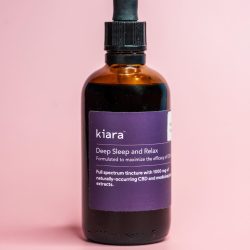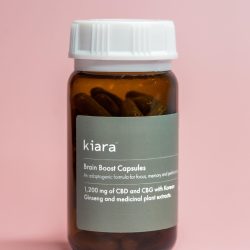Endometriosis is a chronic, inflammatory and astrogne-dependent gynaecological disease, caused when endometrium cells migrate outside the uterus, settling in different areas of the body, mainly in the pelvic region. The disease affects 10% of women of reproductive age, often from the first menstruation, and the number of patients worldwide is estimated at 176 million. The disease usually causes severe pelvic and back pain that worsens during ovulation or menstruation, pain during intercourse, digestive problems, fertility difficulties and more, and significantly impairs the quality of life of its patients.
Endometrium cells outside the uterus respond to hormonal changes similar to the endometrium cells inside the uterus, especially oestrogen. When there is bleeding from the endometrium layer in the uterus, there may also be bleeding from the endometrium tissue outside the uterus as well as various inflammatory processes. The blood secreted from the cells outside the uterus has no way to eject from the body, and its accumulation eventually causes adhesions between the misplaced bloody tissue, and nearby organs, lesions and scar tissues in the pelvic cavity, inflammatory centres that can penetrate the organs, and “chocolate” cysts (endometriomas). The disease is extremely difficult to diagnose, and many doctors are not well versed in it, and the average delay in diagnosis worldwide is about 12 years.
Although many people are already familiar with the pain relief effects of CBD and THC, scientists have uncovered a number of ways in which cannabis extraction (hemp) can focus on the roots of the causes of many medical conditions – including endometriosis.
Cannabidiol (CBD) & Preventing Cell Migration:
Studies show that cannabinoids can treat endometriosis by stopping cell from:
- Proliferation,
- Prevent cell transfer,
- Inhibition and scaling of vascular penetration lesion,
- Inhibition of lesion nerve (nerves),
- Blocking synthesis of inflammatory prostaglandins,
- Modulation/monitoring immune response,
- Reduce sensitivity in nerve cells that transmit pain.
But what is the effect of cannabinoids?
And should you use THC only? CBD only? Or some combination? Whether you are already using cannabinoids to treat endometriosis, or considering experience, we strongly recommend reading to learn about the effects of THC and CBD on endometriosis.
If you’ve been diagnosed with endometriosis, you’re probably already aware that there’s currently no cure.
The treatments offered by doctors – including painkillers, hormone therapy and dangerous surgeries – are only designed to keep endometriosis “under control” and are often ineffective in this.
This is why most endometriosis sufferers seek holistic approaches to coping with their recurrent symptoms – through diet and other lifestyle changes – and combine cannabinoids (such as CBD & THC) as a natural treatment for the disease.

Women with endometriosis usually suffer from at least one of the following symptoms:
- Severe menstrual cramps,
- Pain during sex,
- Pain in urination or bowel movements,
- Chronic lower back pain, Stomach / Pelvis,
- Diarrhoea,
- Constipation,
- Nausea,
- Infertility,
- Difficulty getting pregnant.
How can endometriosis be treated? There is no known cure for endometriosis. The treatment focuses on managing symptoms while trying to prevent the spread of endometriosis. Usually, doctors offer one or more of the following three treatment options:
- Analgesics: The most permanent resource for treating endometriosis is an effective analgesic. Anti-inflammatory drugs (NSAID) and painkillers. Analgesics help endometriosis sufferers cope with painful symptoms, but do nothing to prevent the progression of the disease. Sometimes more extreme analgesics are prescribed, with debilitating systemic effects.
- Hormones: Another popular prescription is intended for hormone therapy, which is considered to relieve symptoms by reducing strength and / or the amount of menstrual cycle. However, some patients respond poorly to hormone therapy.
- Surgery: Doctors can surgically remove the endometrial tissue misplaced, which usually provides tremendous relief for a short time. Unfortunately, there is a high risk of complications, and about half of the patients will return their symptoms within a year, and additional treatment will be required. Another surgical option is ovarian mastectomy – both surgical and natural menopause will end the cyclical nature of changes in the uterine motif. Unfortunately, pain resulting from scar damage to endometriosis may persist beyond menopause, requiring treatment for lifelong pain.
CBD products that may help as a natural treatment for endometriosis:
What causes Endometriosis?
To develop more effective treatments, scientists are working to piece together how endometrial tissue thrives where they don’t belong. The most popular theory is that menstrual blood flows in the wrong direction, carrying endometrial tissue to the fallopian tubes, ovaries or abdomen. Other researchers hypothesize that environmental factors or toxins can cause the body to spontaneously produce endometrial cells in the wrong place. However the primary cells arrive, once they are there, they grow and spread (similar to cancer cells), they disrupt the immune system and manage to thrive.
They recruit blood residuals to supply nutrients and remove waste (such as cancer), and they grow new nerve endings that increase the perception of pain. Like cancer cells, endometriosis can migrate to other tissues in order to claim more territory — even returning lost territory after surgery. Although endometriosis is considered a benign disease, patients whose bodies are unable to prevent the spread of endometriosis (due to genetics or environmental factors), also have a much higher risk of ovarian cancer. Due to the similarities, some hypothesise that treatments that prevent the development and spread of cancer may do the same with regard to endometriosis.
Cannabis & Endometriosis
Women around the world use cannabis extracts to treat endometriosis, menstrual cramps and other gynaecological complications – and they have been used for thousands of years. In recent decades it has been shown that THC and CBD are effective treatments with few side effects. One of the reasons scientists are passionate about these compounds is the recent discovery that the body’s natural endocannabinoid system is integral to the healthy functioning of the reproductive system. In fact, an imbalance in these fats (LIPID MEDIATORS) is most often linked to reproductive complications and diseases — including endometriosis — and it seems that careful use of phytocannabinoids can make a huge difference in the underlying imbalance.
How Cannabinoids stop doubling the cell?
Usually, the body has tools to prevent cell growth and destroy them (apoptosis) before they become a problem. Unfortunately, apoptosis appears to be impaired in people suffering from endometriosis and similar disorders. The Endocannabinoid System is involved in apoptosis and stops cell growth.
Perhaps the most famous application of these effects is in cancer treatments. When certain cannabinoid receptors are activated (either by endocannabinoids in the body or by THC originating from the plant) they can prevent the reversal of cancer cells. Similar research has shown that activating these receptors inhibits the proliferation of endometriotic tissue in mice.
CBD & Preventing Cell Migration
A frustrating problem for patients suffering from their endometriotic surgery in surgery is that endometriosis often returns.
However, scientists recently discovered that endocannabinoids are involved in regulating cell migration. It turns out that molecules like CBD can stop the migration of endometriotic cells (by blocking the activation of the GPR18 receptor).
Molecules like THC that activate this receptor may increase cell migration. This suggests that women who treat themselves with THC should consider balancing its effects with CBD.
CBD and starvation of lesions from the bloodstream: (Starving the Bloodsuckers)
For something to grow, it needs nutrients to be supplied. Endometriotic lesions can also reproduce only if they develop a network of vascular (and scolarising) in order to obtain the necessary nutrients.
Although studies on the effect of cannabinoids on endometriotic blood vessels are limited, multiple studies have shown that both THC and CBD can inhibit the prosperity of the blood vessels of cancerous lesions and their penetration into tumours.

Antitumorigenic Effects of Cannabinoids beyond Apoptosis CBD
Against a more painful form of acute endometriosis embedded deeper in abdominal tissue. One reason why these lesions may be more painful is that they contain a much higher nervous density than other lesions. Endocannabinoids regulate nerve growth, and their receptors (CB1) are manifested in nerves that internalize endometriotic lesions. Molecules like CBD prevent irritation. However, this may imply that using THC without the effects of CBD’s counter-balance may cause a long-term increase in uterine sadning in endometriosis.
Cannabinoid receptor 1 contributes to sprouted innervation in endometrial ectopic growth through mitogen-activated protein kinase activation CBD as Advil without the side effects of NSAID drugs like Advil are one of the most common treatments for endometriosis. NSAID drugs work by inhibiting certain enzymes (called COX-2) that contribute to inflammation. Unfortunately NSAID thins the blood and can cause gastrointestinal side effects because they also inhibit other enzymes (like COX-1). It turns out that the anti-inflammatory effects of CBD come with less of these side effects because it inhibits specific COX-2 but not COX-1.
Cannabidiolic Acid as a Selective cyclooxygenase-2 Inhibitory Component in Cannabis Over-active immune cannabinoids A large part of your body’s endocannabinoid receptors (CB2) are found in the killer cells of your immune system (macrophages). When these receptors are activated they prevent macrophages from releasing inflammatory proteins (cytokines). People with endometriosis become more susceptible to toxins and inflammatory signs. Fortunately THC activates CB2 receptors, which is a major contributor to THC’s anti-inflammatory properties. This is beneficial for an out-of-control inflammation caused by an overactive immune system – although immunosuppression is not always desirable.
The Clinical Significance of Endocannabinoids in Endometriosis Pain Management
CBD &THC Pain (Pain Signals) Nerves that reach endometriotic lesions can increase the pain of endometriosis. These nerves also contain endocannabinoid receptors (CB1) and when THC activates this receptor it can help reduce pain. CBD also helps relieve feelings of pain, but through other mechanisms. The most prominent is the lowering of the sensitivity threshold of the pain receptor TRPV1 Endocannabinoid Involvement in Endometriosis
Important note to know: Scientists still reveal the different ways in which cannabinoids like CBD and THC – affect endometriosis. Until then, a careful self-experiment is the best way to determine the optimal combination of cannabinoids to complete your current endometriosis treatment.
Many women with endometriosis have already incorporated cannabinoids into their self-treatment routines, and we recommend checking their recommendations before making a decision. Whether you incorporate cannabinoids into your self-treatment routine or not, there are many alternative therapies available if purely medicinal or medical treatment does not help. Dietary changes often have profound effects on endometriosis symptoms.
An anti-inflammatory diet rich in omega-3 fatty acids, soluble fibre and antioxidants is a good place to start. You may find that acupuncture and meditation are effective tools for treating pain. In addition, other natural supplements can focus on endometriosis in ways similar to cannabinoids. As always, before making changes to your endometriosis treatment, make sure to consult a trusted healthcare professional.
Benefits Of CBD As A Natural Treatment For Endometriosis:
Regardless of and/or addiction | Without the need for dose increase – The body barely develops tolerance for CBD | No special or significant side effects | No high-sensation or intoxication | No disruption to the routine of the day!
Another professional research on CBD as a natural treatment for endometriosis:
The molecular connections between the cannabinoid system and endometriosis
From the study: The endocannabinoid system consists of a variety of bioactive lipids produced in our bodies that activate cannabinoid receptors 1 and 2 (CB1 & CB2). Changes in this system have been described in almost every category of diseases in man.
These changes can be protective or non-adaptive, making the endocannabinoid system an important therapeutic goal. Little is known about the potential role of endocannabinoids in the development of endometriosis, although this is an issue worthy of further examination since endocannabinoid modules have recently been shown to influence specific mechanisms critical for the establishment and maintenance of endometriosis.

A literary review was carried out here with the aim of defining the regulation and functioning of endocannabinoid signalling in vitro and animal models of endometriosis.
The components of the Endocannabinoid System, CB1 and CB2 receptors and the enzymes N-acylphosphatidylethanolamine-phospholipase D and FAAH fatty acid are differentially regulated throughout the menstrual cycle in the endometrium and manifest themselves in deep endometriotic nodulations and sensory and positive neurons that form the uterus.
Agonists for cannabinoid receptors, such as WIN 55212-2, appear to limit cell proliferation and suppress pain symptoms. In contrast, endometrial cell migration tends to be stimulated by agonists for these receptors. It seems that the phosphatidylinositol 3-kinase/Akt pathways and kinase 1/2 pathways are involved in these processes.
However, the mechanisms of action underlying the phenomenon are only beginning to emerge. Given the complexity of the system, more studies are needed to clarify whether the endocannabinoid system may represent a promising target for natural endometriosis.
Introduction: Endometriosis is defined as the presence of endometrial-like tissue outside the uterus, which stimulates a chronic inflammatory response. Population-based studies have estimated the annual incidence of endometriosis between 0.1 and 0.3%. This equates to 176 million women worldwide who are forced to deal with the symptoms of endometriosis during the fertility years of their lives. Current medical treatments are effective in relieving pain, often with short-term effects. However, they have many unwanted and sometimes severe side effects that limit the long-term treatment of the disease. Ideal medical treatment will eliminate endometriotic lesions, prevent recurrence and do not damage bots.
As a result, innovative medical care is needed capable of fulfilling these needs. The recent understanding of the strong interplay between the local inflammatory process and the hormonal system at the molecular level led to the consideration of aromatase as a potential therapeutic target. However, results with this target were less clinically promising than previously predicted, mainly because of the need to use other compounds in combination with aromatase inhibitors during treatment. It has recently been shown that cannabinoids and modulators of the endocannabinoid system affect specific mechanisms (inflammation, multicellular and cell survival) that are critical to the formation of endometriosis.
The endocannabinoid system, consisting mainly of bioactive limpides and their receptors, is uniquely backed up to a disease because changes in endocannabinoid levels and the coltanic expression of cannabinoids appear to be a common response to the pathological process. In some diseases like multiple sclerosis, it is estimated that the endocannabinoid system plays a protective role by delaying the progression of the disease. The study of mechanisms for regulating the cannabinoid system not only sheds light on the pathophysiology of a disease but is also interesting therapeutically.
Agonists for cannabinoid receptors may be useful in diseases in which the activation of the receptor has a protective effect; Alternatively, antagonists may be useful in situations where receptor activation has been shown to be associated with pathogenesis of the disease. Given the great potential interest but the minority of available data on the role of the endocannabinoid system in endometriosis, the current review is aimed at revealing molecular connections between the disease and the endocannabinoid signalling. This is in the ultimate goal of understanding whether pharmacological treatments aimed at the endocannabinoid system for the treatment of endometriosis can be considered.
Conclusions: The potential role of cannabinoids in the pathogenesis of endometriosis must still be clarified. While agonists appear to have a positive effect in limiting cell proliferation and disease-related pain control, they also tend to speed up cell migration that represents a critical process in disease maintenance.
Endocannabinoid involvement in endometriosis
From The Article: The observations and studies in the rat model of endometriosis provide evidence that endocannabinoids may regulate the bones of abnormal tumours of the disease and that exogenous cannabinoids can be effective in reducing endometriosis symptoms.
The fact that the expression of the CB1 receptor is larger in cysts outside the uterus compared to the healthy uterus in rats indicates that treatments for activating CB1 receptors (either directly by CB1 agonists or indirectly by increasing the relevant endocannabinoid levels) can be developed with minimal effects on uterine function. Although the rat model corresponds to many aspects of endometriosis in women, there are of course significant differences. However, when looking at together with the history of successful cannabinoid use for gynaecological pain relief, and to the extent that findings in rats can model mechanisms of signs and symptoms related to endometriosis, the current results suggest that approaches aimed at the endocannabinoid system represent a promising new direction for the development of new treatments necessary for pain difficulties suffered by women with endometriosis.
Endocannabinoid system and endometriosis infection: Local inflammation plays a key role in the pathogenesis of endometriosis and pain associated with endometriosis, mediated by a wide range of pro-inflammatory molecules.
The presence of mast cells is increased in endometriosis, and the close histological link between mast cells and nerves strongly suggests that mast cells can contribute to the development of pain and hyperalgesia in endometriosis.
In a study that analysed protein expression in human endometrial tissues and the expression mRNA in isolated stromal cells after exposure to the substance that drives inflammation or progesterone receptor antagonist, the loss of CB1 was associated with inflammation indicating anti-inflammatory action of progesterone using CB1.
Cannabinoid colts have been shown to have been found in inflammatory endometrial tissue, and selective activation of CB2 was associated with the Nitric Oxide (NO) release process present in endometrial inflammation.

PEA may affect inflammation by inhibiting the activity of pro-inflammatory enzymes like COX, eNOS and iNOS and by reducing mast cell activation in studies on mice. TRPV1 and TRPA1 receptors are important molecular receptors of a wide range of inflammatory stimuli (protons, brady cain, prostaglandins, lipoxigine products, anandamide, nitric oxide, hydrogen peroxide, formaldehyde, methyl glycoli, free radical acerolin (ROS), and play crucial roles in pain resulting from inflammation and inflammation itself.
Endocannabinoid system and pains related to endometriosis, quality of life and sexual function:
Palmitoylethanolamide (PEA) is a shorter and completely saturated analogue of AEA (Anandamide), and is an endogenous agonist of CB1. PEA accumulates during inflammation and processes a number of anti-inflammatory actions and reduces mast cell degeneration. They are reported to exert anti-inflammatory and analgesics in both acute and neuropathic pain conditions. Increased presence of mast cells that penetrate deep into the tissue in endometriosis, and the close histological link between mast cells and nerves suggests that mast cells can contribute to the development of pain and hyperalgesia in endometriosis.
Several studies and meta-analysis were conducted that examined the effects of PEA on endometriosis pain symptoms and quality of life. PEA in combination with polydatin, a polyphenoly compound phytoalexin that regulates inflammation, significantly reduced dysmenorrhea associated with endometriosis, dysperonia and pelvic pain compared to placebo after 3 months of treatment.
Furthermore, it has been discovered that PEA with polydatein is equally effective as hormone therapies, including leoperlorelyne acetate (VAPRORELIN ACETATE synthetic analogue of GnRH) and ethnilasteradyol + drospirenone in reducing pain syndrome associated with endometriosis without the anti-ovulation effects.
A recent meta-analysis evaluating pea’s clinical efficacy with polydatein in reducing endometriotic chronic pelvic pain concluded that it resulted in a clinically relevant improvement of chronic pelvic pain and dysamnarrhea while improving limitedly deep dyspareunia. PEA with transdatine resulted in a significant improvement in the mental and physical component of the SF-12 Quality of Life Questionnaire, while two hormonal treatment groups resulted in significant improvements only in the physical component.
A prospective study involving 56 women evaluated the effects of PEA with transdatine on pain, quality of life and sexual function using the visual analog scale (VAS), quality of life questionnaire (SF-36), women’s sexual function index (FSFI), women’s sexual distress scale (FSDS) and reported improvement in pain symptoms, all categories in the SF-36 quality of life questionnaire and FSFI and FSDS score in the sixth and nine months.
Endocannabinoid system, hormones and sexual steroids:
Role of Progesterone: Progesterone is a steroid hormone produced mainly after ovulation by corpus lotyam and activates its initial action through the intracellular progesterone receptor. Exposure to progesterone is recognized as protecting against the development of endometriosis, and studies show that as a result of endometriosis is caused by a reduction in progesterone expression. The effect of progesterone on nape-PLD expression in the uterus and ovaries has been tested using mice.
Progesterone is reported to regulate the expression NAPE-PLD in the uterus, leading to possibly a decrease in AEA levels although no association was found between AEA and progesterone among menstrual women. The relationship between progesterone and ECS in the uterine mary of women with endometriosis has been tested.
It has been shown that 2,3,7,8-tetrachlorodibenzo-dioxin TCDD (or dioxin) causes progesterone-resistant cell phenotype as a result of progesterone receptor expression in endometrial stroma cells from disease-free women. The manifestation of CBR mRNA and increased protein during the secretion of the dominant secretion of progesterone in a healthy human endometrium, but the expression was minimal in endometriosis tissue obtained from women with endometriosis regardless of the stage of menstruation, suggesting that endometriosis patients show changes in cannabinoid response. Treatment of progesterone in endometrial stroma cells led to a significant increase in the expression of CBR mRNA, and the receptor antagonist for progesterone (onapristone) largely prevented this effect. The use of multiple stage stroma cells without prior exposure to progesterone in vivo together with the use of unferston to block progesterone action in vitro confirms progesterone’s involvement in regulating the expression CB1 in human stroma cells.
Role of Oestrogen: The effects of oestrogen on cell migration were evaluated through human endometrial cancer cell lines, and it was found that cell activity was increased by oestrogen, but not altered by progesterone. This ability of human endometrial cells to migrate in response to oestrogen is associated with oestrogen dependence on endometriosis. The effect of oestrogen on nape-PLD (the enzyme produced by AEA) in the uterus and ovaries has been tested using mice in the ovaries. Oestrogen is reported to regulate the expression NAPE-PLD in the uterus, suggesting it causes a decrease in AEA levels.
A separate study, which also included mice’s ovaries, reported that oestrogen significantly reduced FAAH activity compared to untreated cases. The highest plasma AEA levels were measured during ovulation and the lowest level was measured in the late luteal phase, and there was a statistically significant positive correlation between the AEA level and the astradiol level, suggesting that it may be involved in regulating AEA levels. The significant differences in concentrations and expressions of ECS components were reported in the utopian and atopic endometrium, and in the bloodstream of women with endometriosis compared to reviews. Although there are conflicting reports regarding the role of ECS in endometriosis, endometriosis appears to be related to a decrease in the manifestation of CB1 receptors and an increase in the expression of TRPV1 receptors.
The importance of suppressing the action of CB1 receptors in endometriosis is highlighted by the reported study on the relationship between CB1 loss and inflammation that indicates the anti-inflammatory action of progesterone through CB1.

Endometriotic lesions surrounded by inflammation:
The relationship between reduction in CB1 and inflammation may also indicate that endometriotic lesions may reduce the expression of the endocannabinoid system and on the other hand, if the progesterone response is regulated in ectopic tissue this may also cause a decrease in endocannabinoid system activity. Tolerance/resistance to progesterone developed in endometriotic lesions can affect endocannabinoid responsiveness.
This means that treatment may be relevant for certain lesions and the potential is found in personalised medicine. The finding of regulation of TRPV1 receptors in endometriosis seems especially relevant, since endometriosis is characterised by inflammation and associated pain symptoms and receptors for TRPV1 are known to play important roles in pain and inflammation. It is worth noting that the endocannabinoid system is significantly influenced by hereditary factors with suspected genetic effect on the endocannabinoid system’s contribution to neurological development.
Analysis of data from the Gtex portal indicates that the expression of quantitative properties (eQTL), genetic variants that appear in the population throughout the entire genome, exist for crucial genes of the endocannabinoid system in several different tissues. Furthermore, studies have shown that variance in the phenomenon of side effects to exogenous compounds may occur depending on the genetic variants in the FAAH enzyme.
More research is required with strict predetermined containment and exclusion criteria that ensure the details of patients’ characteristics and clinical information to investigate the exact functions of the endocannabinoid system in endometriosis. There is reasonable evidence to support PEA efficacy in managing endometriosis-related symptoms. Further studies in vivo should be conducted clinically, and CB1 and TRPV1 may be a potential target for future molecular treatment.
The Clinical Significance of Endocannabinoids in Endometriosis Pain Management
Patients with endometriosis often suffer from intense pain and are dispersed locally. Current strategies for treating pain include medical and hormone therapy, as well as surgery. Medical treatment for pain is often insufficient and is associated with a high recurrence rate. Therefore better treatment of pain has an urgent need.
Methods: Among the different candidates, the Endocannabinoid System (ECS) has recently been discovered as a relevant pharmacological target for the treatment of pain associated with endometriosis. Computer literature is searched to identify relevant studies that combine the keywords “endometriosis”, “endocannabinoid”, “cannabinoid receptor”, “THC” and “pain mechanisms”.
Conclusions:
This review describes the multiple and complex pain mechanisms associated with endometriosis. Current data and theories relating to the link between ECS and the treatment of pain for endometriosis patients are presented. Finally we will discuss what aspects of pain related to endometriosis can be targeted through the modulation of the ECS. The interactions between the endocannabinoid system and mechanisms related to pain in endometriosis patients occur on several levels: Changes in the central and peripheral nervous system, involvement of neuropathic and inflammatory pain, psychological interaction with the pain experience, hormonal variance of pain, manifestation of cannabinoids, receptors, enzymes and ligands. Treatment of pain for patients with endometriosis should be more effective, direct the hormonal and immune environment, regulate the spread while improving apoptosis and normalising the invasive mechanisms and neuro angiogenesis processes.
The modulation of the ECS is seen as a good therapeutic strategy by potentially combining all these factors. The focus of endocannabinoid modulation to treat pain is probably more than just pain treatment because it may affect several levels of pathogenesis and the spread of the disease. Special attention and further examination are needed to assess the effect of potential therapeutic side effects, especially on the results of fertility and pregnancy.
Use self-management strategy among Australian women with endometriosis: National Auditor results. Cannabis Use and Self-Management Strategy Among Australian Women With Endometriosis: Results From a National Online Survey.
This study sought to determine the prevalence, dependence and effectiveness reported by cannabis in women with endometriosis.
Methods: An online survey of cuts was conducted between October and December 2017. Recruiting targeted women suffering from endometriosis through social media posts from endometriosis advocacy groups. Women aged 18 to 45 living in Australia and with surgically approved endometriosis were eligible to participate. Survey questions looked at the types of self-management used, change in symptoms or the use of medications, costs and negative events.
Results: A total of 484 responses were included in the analysis, with 76% of women reporting the use of general self-management strategies over the past 6 months. Of those who use self-management, 13% reported using cannabis to manage symptoms. The effectiveness of self-reporting in reducing pain was high (7.6 out of 10), with 56% also managing to reduce medications by at least half. Women reported the greatest improvement in sleep and nausea and vomiting. Side effects were rare (10%) and minor.
Summary: Australian law currently requires the use of legal medical cannabis to track certain monitoring pathways that restrict prescription using this method; However, illegal self-use of cannabis remains relatively common among Australian women with endometriosis. Women report good efficacy of cannabis in reducing pain and other symptoms, with few reports of side effects. More clinical research is needed to determine the efficacy of cannabis in managing endometriosis symptoms. Where medical cannabis is more accessible, a minority of evidence of its clinical efficacy remains with endometriosis-related symptoms.







